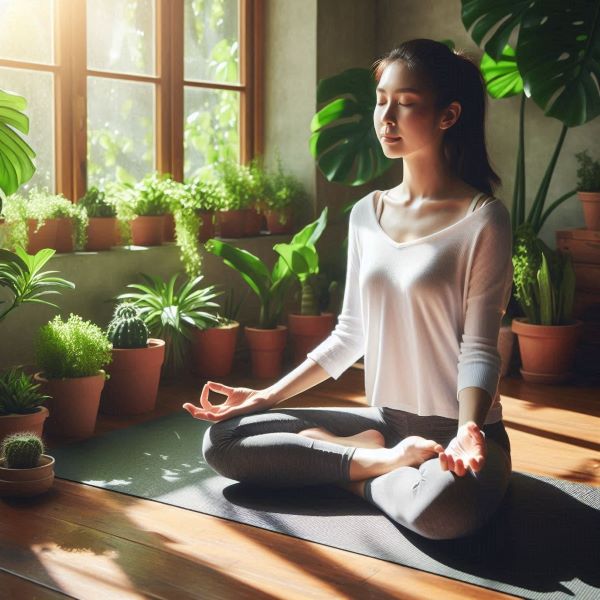Padmasana, known in English as the Lotus Pose, is one of the most iconic and recognized yoga poses. It is a cross-legged sitting posture that is commonly used for meditation and pranayama practices. Padmasana is highly valued for its ability to calm the mind, enhance concentration, and promote physical stability.
History
The name Padmasana is derived from the Sanskrit words “Padma” meaning “lotus” and “Asana” meaning “pose.” This pose resembles the petals of a lotus flower, symbolizing purity and enlightenment in Hinduism and Buddhism. Padmasana has been practiced for thousands of years, with references found in ancient yogic texts such as the Bhagavad Gita and the Hatha Yoga Pradipika. It has been a preferred meditation posture for sages and yogis throughout history.
Also, read: Quickly Learn all about Ardha Matsyendrasana-Half Lord of the Fishes Pose
How to Do Padmasana
To perform Padmasana correctly, follow these steps:
- Starting Position: Sit on the yoga mat with your legs extended straight in front of you. Keep your spine straight and your hands resting beside your hips.
- Bend the Right Leg: Bend your right knee and place your right foot on your left thigh, with the sole facing upward. Bring the heel close to your abdomen.
- Bend the Left Leg: Bend your left knee and place your left foot on your right thigh, with the sole facing upward. Ensure both knees are touching the floor and the soles of your feet are turned upward.
- Adjust the Position: Rest your hands on your knees in a mudra (e.g., Gyan Mudra – thumb and index finger touching). Keep your spine erect, shoulders relaxed, and head aligned with your spine.
- Hold the Pose: Close your eyes, breathe deeply, and hold the pose for as long as comfortable, starting with a few minutes and gradually increasing the duration.
- Release the Pose: To come out of the pose, gently lift your left leg off your right thigh and extend it. Repeat with the right leg.
Health Benefits
Regular practice of Padmasana offers numerous health benefits, including:
- Enhancing Flexibility: Improves flexibility of the hips, knees, and ankles.
- Promoting Mental Clarity: Calms the mind and enhances concentration, making it ideal for meditation.
- Improving Posture: Strengthens the back and helps maintain a straight spine.
- Stimulating Digestion: Presses against the abdomen, aiding in digestion and improving metabolic functions.
- Balancing Energy: Promotes the flow of prana (life force energy) throughout the body, balancing the chakras.
Who Should Do Padmasana
Padmasana is beneficial for most individuals, especially those who:
- Practice meditation and seek to improve their concentration and mental clarity.
- Want to enhance their flexibility and maintain a healthy posture.
- Are looking to calm their mind and reduce stress.
- Experience digestive issues and want to stimulate their abdominal organs.
Who Should Not Do Padmasana
Certain individuals should take precautions or avoid practicing Padmasana:
- Those with knee or ankle injuries should avoid this pose to prevent strain.
- Individuals with hip problems may find this pose uncomfortable and should consult with a healthcare provider.
- Pregnant women should avoid this pose, especially in the later stages of pregnancy.
- People with sciatica or severe lower back issues should practice with caution or avoid the pose.
Precautions to Take
When practicing Padmasana, keep these precautions in mind:
- Avoid forcing the legs into position; move gently and within your comfortable range of motion.
- Use props like cushions or blocks to support your knees if needed.
- Ensure your spine remains straight and avoid slumping or leaning forward.
- Practice on an empty stomach or wait at least 2-3 hours after a meal.
- If you experience any pain or discomfort, release the pose and rest.
References and Sources
By incorporating Padmasana into your regular yoga practice, you can enjoy its numerous benefits while enhancing your mental clarity, flexibility, and overall well-being. Always practice mindfully and consult with a yoga instructor if you have any health concerns.





